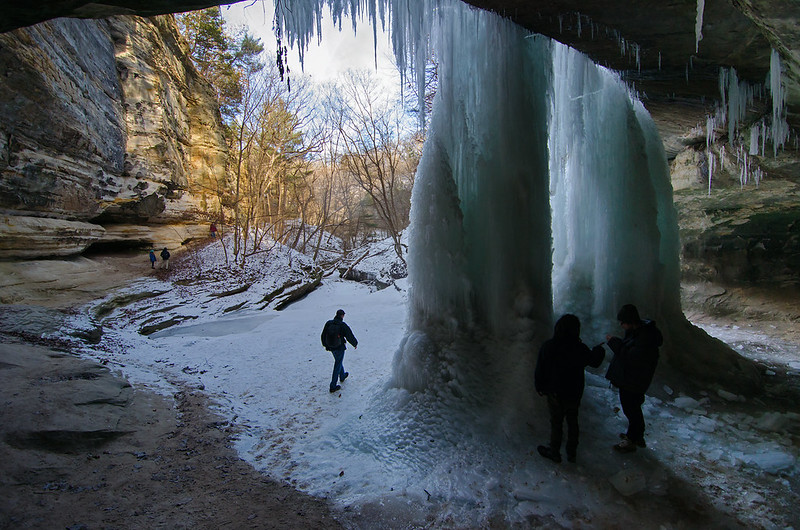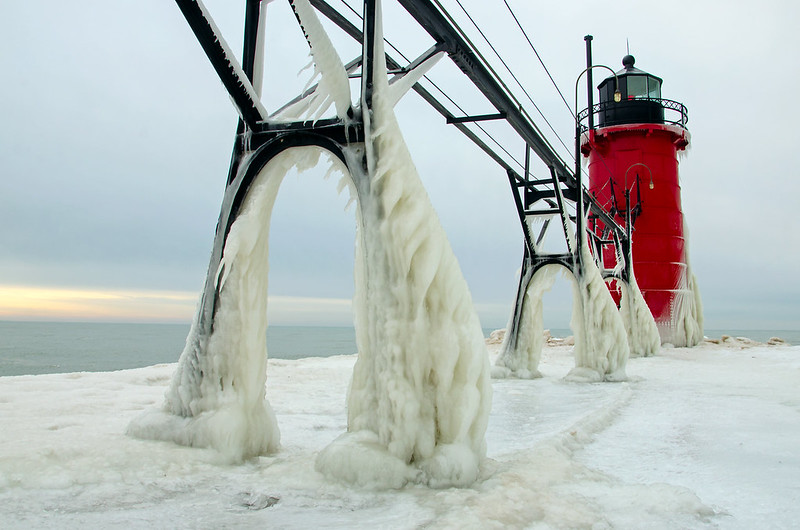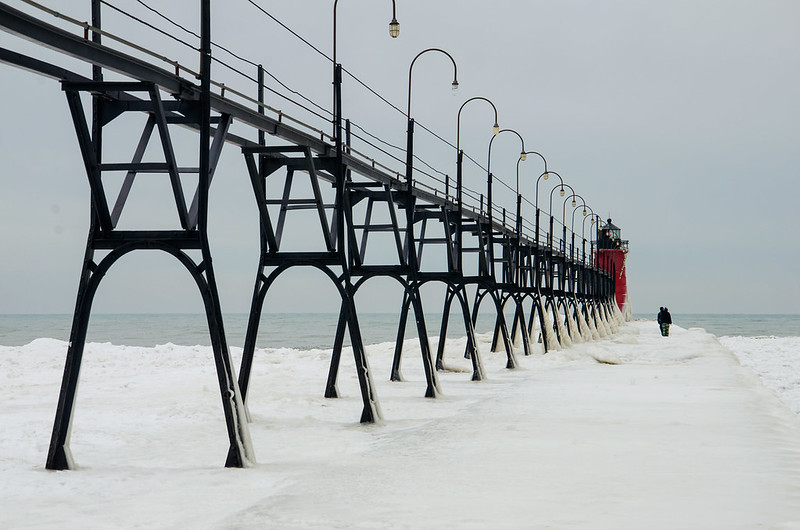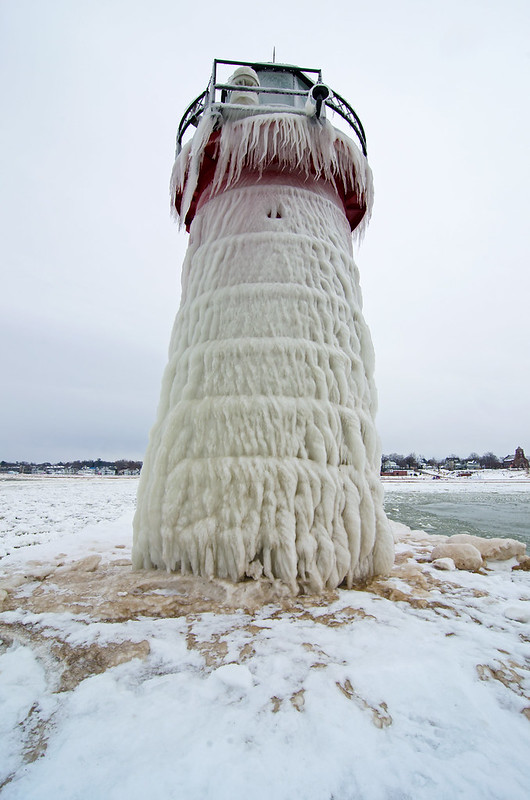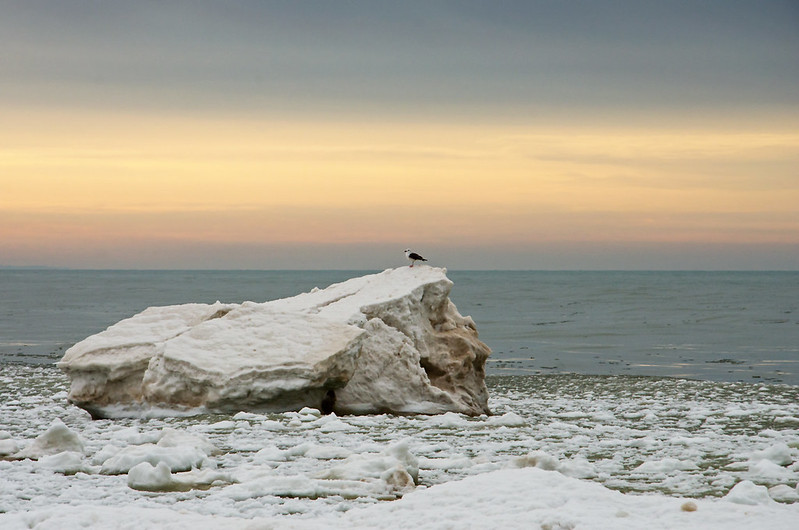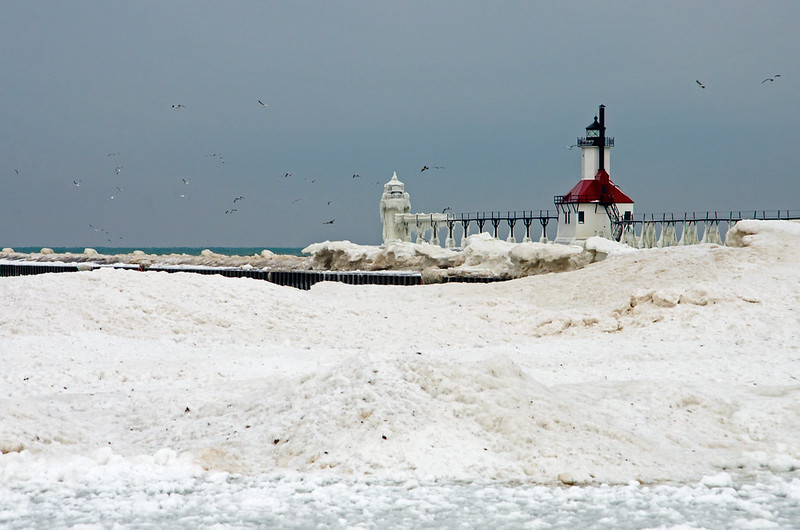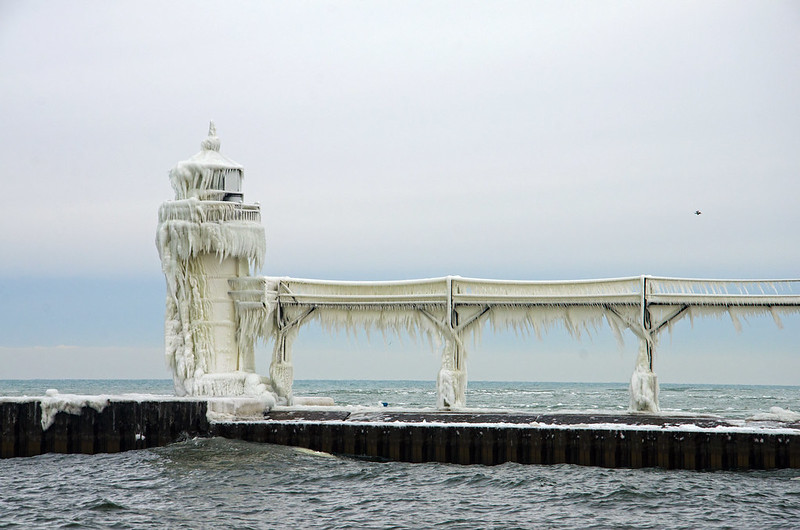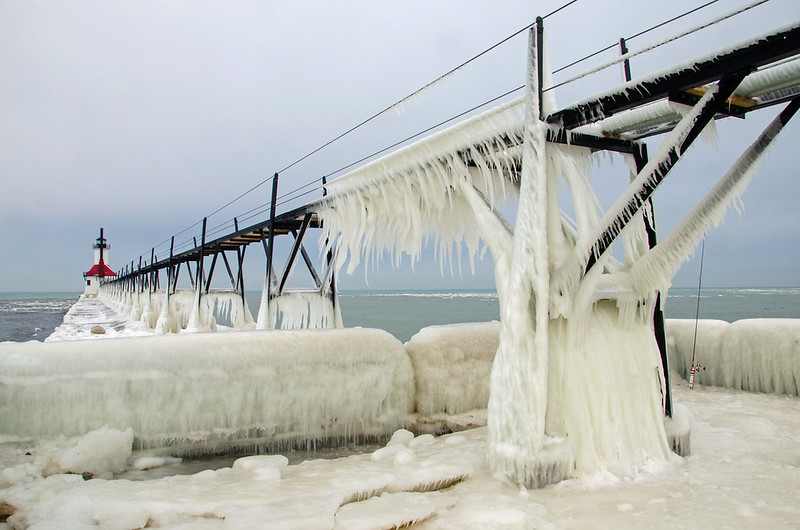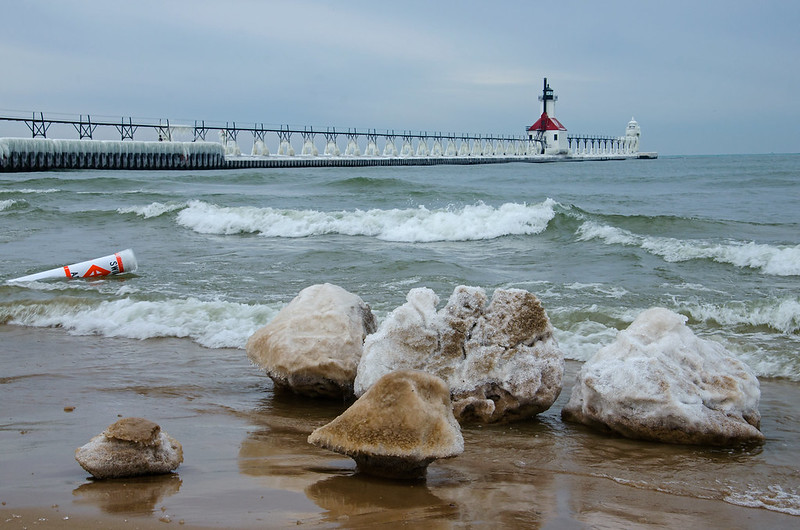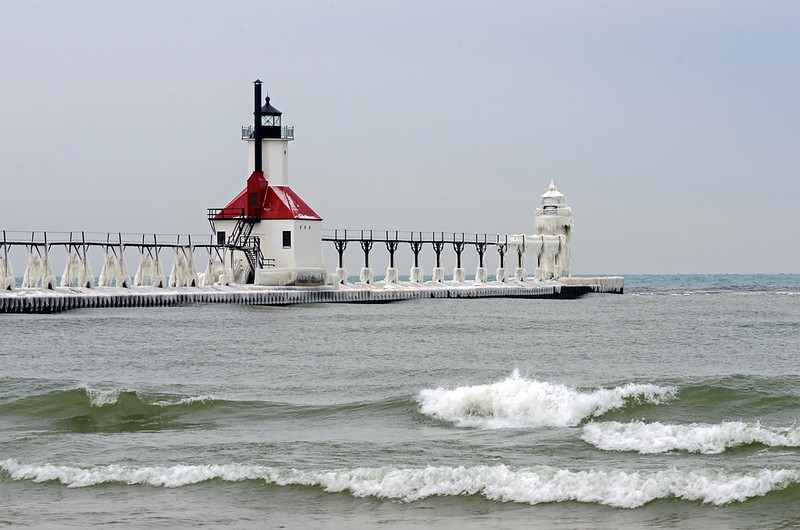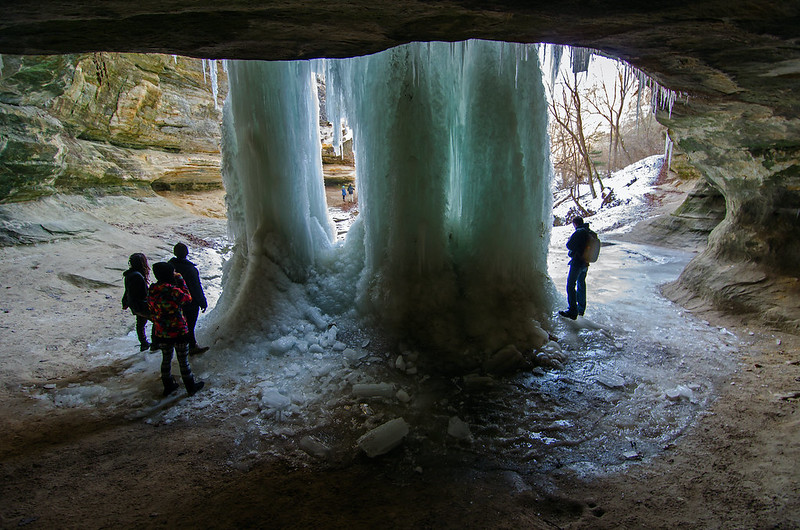
The days before Christmas were quite cold in Northern Illinois, cold enough to freeze the waterfalls of Starved Rock State Park. Each year, the waterfalls in most of the canyons of the park freeze when the air temperature drops low enough. A deep freeze right after a warm period, or after a rainfall, creates the largest frozen falls because of the amount of water falling into the canyons.
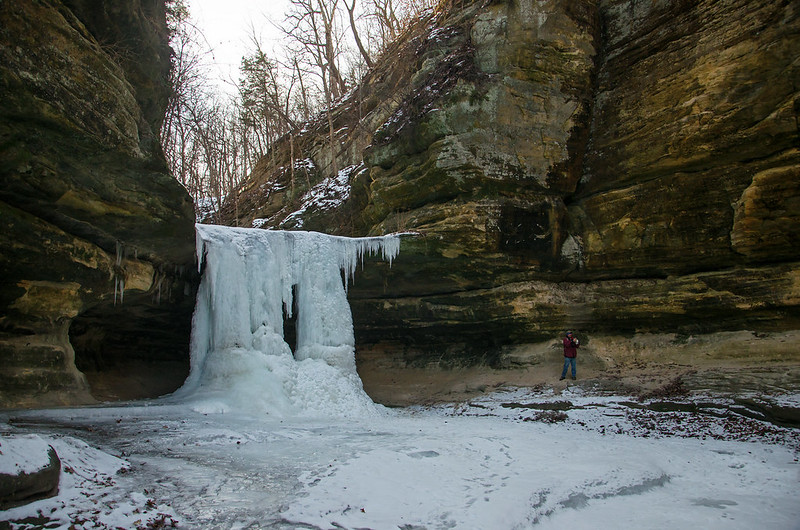
The frozen falls are approximately 20 feet tall, and presents itself to visitors after a long hike into the canyon.
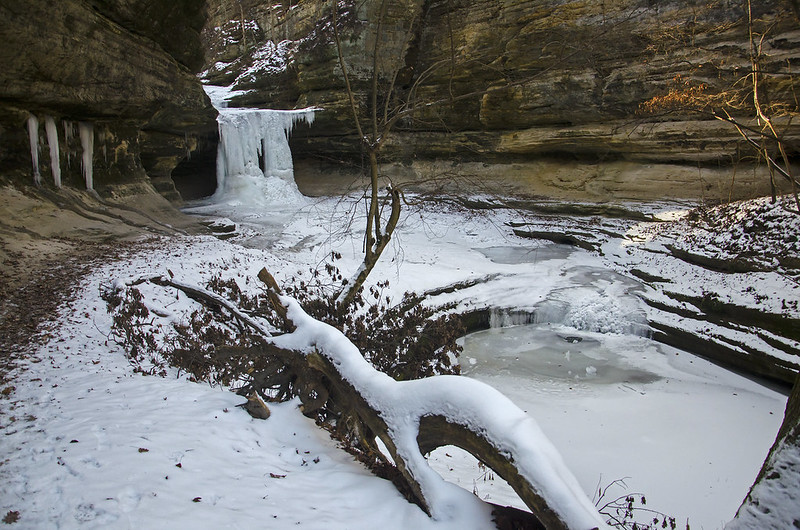
LaSalle Canyon offers visitors the possibility of walking behind the waterfall, in a sort of ice cave. The rock of the canyon wall is undercut, creating an overhand of rock. When the waterfall cascades over this overhang, it creates an ice wall. Walking behind the falls is breathtaking - the ice is illuminated by the sunlight, and it also takes on the colors of the rock, sky, and anything else in proximity.
